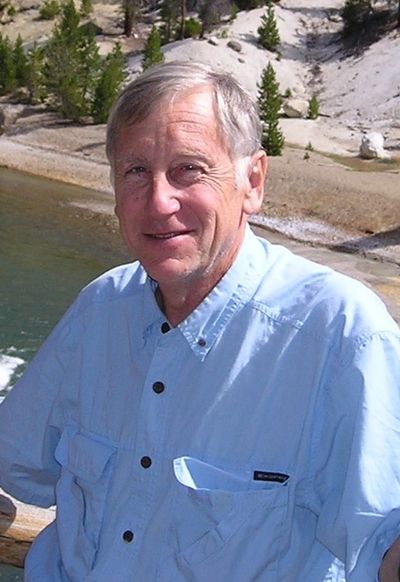the TEAM - WORKING TO MAKE A DIFFERENCE

Stan Farkas, PhD: Organization Lead; Scientist
Retired NASA Ames Project Manager.
I first became fascinated with climatology while teaching Human Evolution and finding how climate change drove the evolution of early man. A trip to the arctic solidified my interest after witnessing the power of the sights and sounds of ice bergs calving off Greenland glaciers. My passion to educate and advocate for resolving our climate crises came after briefing four members of Congress or their staff on the dangers to our national security from major proposed cuts to NOAA and NASA’s climate related programs.

Gary Latshaw, PhD: Scientist
Retired College Physics Professor
I became completely enamored with science after the Soviets launched Sputnik in 1957. I sat on the edge of my couch watching Cape Canaveral launches. The Unites States was trying to catch up with the Soviets in space. For every successful launch, there were multiple failures. I became a science nut and eventually earned by doctorate in physics at Stanford. Also, growing up in smoggy LA I was well aware of the harm of atmospheric pollution and other environmental issues. Now, in retirement, I am able to devote myself to environmental issues. I was among the first trained (1987) by Al Gore's organization, The Climate Reality Project, on the topic of man-made climate change.

Philip B. Russell, PhD: Scientist
Retired NASA Ames Atmospheric Scientist
I was first attracted to the science of climate change in the late 1960s while working on my PhD in nuclear physics. In the 1970s I discovered that my physics background could be applied to studying the properties of suspended particles (aerosols) and their role in climate. This led to a multi-decade career with NASA, developing and using airborne instruments to test and extend satellite measurements of aerosol and trace gas properties and effects, and applying the satellite data sets to evaluate regional impacts.

Anthony W. Strawa, PhD: Scientist
Retired NASA Ames Atmospheric Scientist
I was working at NASA on as an aerospace engineer in the early 1990’s. I was intrigued by the fact that computer models could not accurately predict climate without including the effects of particles in the air. I thought that my expertise in experimental diagnostics could be put to better use to help explain the effects of particles on climate instead of making airplanes go faster. It is difficult to believe that 30 years later we are still we are not moving quickly to address the climate crisis.

Catherine Shinners: Communications, Marketing, Outreach. Communications and Management Consultant, Silicon Valley
I have had a career in high tech and business in Silicon Valley as a consultant in Communications and Management. Dr Farkas gave a brief talk at a public meeting on the climate crisis in the Arctic in March 2020 that immediately catalyzed my interest and commitment and was soon asked to join the Secure The Future 2100 team. I am providing my expertise in the mission of public education and policy advocacy by helping to communicate and engage our stakeholders; the science community, the general public, policy makers and elected officials.